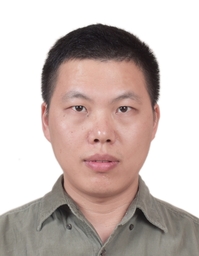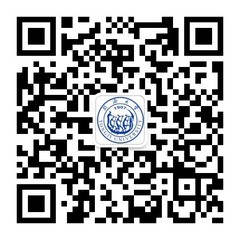
【个人简介】
同济大学外国语学院长聘教授。2012年博士毕业于华东师范大学,2020年完成浙江大学博士后研究,2024年在图宾根大学获得德国大学计算语言学教授资格(Habilitation)。2017年至2025年任职于图宾根大学计算语言学系,担任助理教授及研究员。曾在北京大学、曼彻斯特大学、奥斯陆大学、多伦多大学等多所国际知名高校与研究机构访问学习。
研究兴趣聚焦于计算语言学、认知计算与人工智能的交叉领域,致力于融合统计建模、深度学习以及认知与神经实验方法,探索人类与机器在语言理解与处理中的深层机制。在国家大力推动“人工智能+教育”的背景下, 致力于使用数据和实证驱方法促进语言研究向大语言科学转向。以第一作者在Cognition、Cognitive Science、Linguistics、Neural Networks、PNAS等相关领域国际权威学术期刊(SSCI/SCI)上发表研究性论文30余篇;以第一作者在《中国语文》、《当代语言学》等中文CSSCI期刊发表论文10余篇,多篇被《人大复印资料》和《中国社会科学文摘》全文转载。
主持完成国家社科基金、全国博士后特别资助及多项省部级科研项目,并参与德国科学基金会(DFG)及欧盟科研理事会(ERC)等国际科研项目。开发多个高效大语言模型 (性格检测、作文自动评分和评语等)、大型数据库和语料库,不仅为学界提供了极具价值的工具,并被工业界广泛使用。其研究成果曾被《麻省理工科技评论》专题报道。
现担任多个国际SSCI/SCI期刊和人工智能顶级会议的审稿人,已为包括 Psychological Science、Nature Human Behavior 在内的80余种国际权威学术期刊及ACL、EMNLP、ICML等人工智能顶会提供匿名评审服务。同时为欧洲多国科学基金担任评审人。
【研究领域】
计算语言学、大语言模型推理与评估、 认知与类脑智能 、 认知计算、 情感计算、 高级统计分析(广义加性混合模型、贝叶斯建模、时间序列)
【学术成果】
科研项目(部分):
[1] 国家社科基金青年项目(主持,2015-2020)
[2] 中国博士后特别资助项目(主持,2018-2020)
[3] 浙江省社科项目等(主持6项)
[4] 教育部和国家社科项目(参与3项)
[5] 德国科学基金DFG项目(参与1项)
[6] 欧盟ERC高等级科研项目(参与2项)
代表性论文(* 为通讯作者):
[1] Wang, R., & Sun, K.* (2025). DSPy-based neural-symbolic pipeline to enhance spatial reasoning in LLMs. Neural Networks (SCI) .
[2] Sun, K.*, & Wang, R.* (2025). A novel dependency framework for enhancing discourse data analysis. Data Intelligence (SCI) .
[3] Sun, K., & Wang, R.*, & Harald, Baayen. (2025). Attention-aware measures of semantic relevance for predicting human reading behavior. Linguistics (SSCI) .
[4] Sun, K.*, & Wang, R*. (2025). Computational sentence‐Level metrics of reading speed and its ramifications for sentence comprehension. Cognitive Science (SCI/SSCI), e70092.
[5] Sun, K.*, & Liu, H. (2025). Attention-aware semantic relevance predicting Chinese sentence reading. Cognition (SCI/SSCI) , 105991.
[6] Sun, K.*, Wang, Q., Lu, X. (2023).An interpretable measure of semantic similarity for predicting eye movements in reading. Psychonomic Bulletin & Review (SSCI), 30, 1227–1242 .
[7] Sun, K.*, Wang, R. (2022). The role of mutual information and semantic similarity in sentence processing: The case of dangling construction in Chinese. Journal of Cognitive Psychology (SSCI), 35(2), 142–165.
[8] Sun, K. (2022). Colloquialization as a key factor in historical changes of rational and emotional words. Proceedings of the National Academy of Sciences of the United States of America (PNAS) (SCI), 119 (26) e2205563119.
[9] Sun, K.* & Lu, X. (2022). Predicting Chinese readers’perception of sentence boundaries in written Chinese, Reading & Writing (SSCI), (35):1889 – 1910.
[10] Sun, K.* & Wang, R.* (2021). Using the relative entropy of linguistic complexity to assess L2 language proficiency development, Entropy (SCI), 23(8), 1080.
[11] Sun, K.*, & Wang, R. (2022). Constructing a corpus of Chinese textual “run-on” sentences (CCTRS): Discourse corpus benchmark with multi-layer annotations. In International Conference on Natural Language and Speech Processing, ACL, 265–276.
[12] Sun, K.*, Xiong, W., Wang, R. (2021). Investigating genre distinctions through discourse distance and discourse network, Corpus Linguistics and Linguistic Theory (SSCI),17(3): 599-624.
[13] Sun, K.*, Liu, H.,& Xiong, W. (2021). The evolutionary pattern of language in scientific writings: A case study of Philosophical Transactions of Royal Society (1665-1869), Scientometrics (SSCI), (1):1695 – 1724.
[14] Sun, K.*, & Baayen, H. (2020). Hyphenation as an efficient compounding strategy in English, Language Sciences (SSCI),83(1):101326.
[15] Sun, K.*, &Xiong, W. (2019). A computational model for measuring discourse complexity, Discourse Studies (SSCI),21(6):690-712.
[16] Sun, K. (2019). Teaching English-Chinese textual translation strategies: A topic-chain approach, Babel: International Journal of Translation (SSCI),65(2):286 – 315.
[17] Sun, K., &Wang, R.* (2019). Frequency distributions of punctuation marks in English: Evidence from large-scale corpora, English Today (SSCI), 35(4):23-35.
[18] Sun, K. (2018). Approaching the double-nominal construction in Mandarin Chinese through the semantic-cognitive interaction, Studia Linguistica (A & HI), 72(3):687 – 724.
[19] Sun, K.& Zhang, L.* (2018). Quantitative aspects of PDTB-style discourse relations across languages, Journal of Quantitative Linguistics (SSCI), 25(4):342-371.
[20] 孙坤. 2015. 中国古文特征与标点创造机理—与欧洲标点传统对比, 《中国语文》(CSSCI), 2015年第 6 期; 《人大复印资料 · 语言文字学》2016 年第 2 期全文转载;《中国社会科学文摘》 2016年第 2 期转载.
[21] 孙坤. 2015. 汉语话题链范畴、结构与篇章功能, 《语言教学与研究》(CSSCI), 2015 年第 5 期; 《人大复印资料 · 语言文字学》, 2016 年第 1 期全文转载.
[22] 孙坤. 2014. 汉语话题链的特点与本质, 《汉语学习》(CSSCI), 2014 年第 5 期.
[23] 孙坤. 2013. 话题链应用于英汉翻译模式与策略研究, 《外语与外语教学》(CSSCI), 2013 年第 1期.
[24] 孙坤. 2012. 对社会科学“语言转向”现象的思考——兼论‘社会科学’和‘人文学科’的困境、
危机与对策, 《华南理工大学学报》,2012 年第 5 期; 《人大复印资料 · 社会科学总论》全文转载, 2013 年第 1 期.
[25] 孙坤. 2011. 中国古代兵器英译初探:以《三国演义》英译本为例, Translation Quarterly(翻译季刊),59 : 51–83.
[26] 孙坤. 2010. 当代国外标点符号研究, 《当代语言学》(CSSCI), 2010 年第 2 期.
【联系方式】
办公地址:同济大学(四平路校区)汇文楼225室
电子邮箱:kunsun@tongji.edu.cn / sharpksun@hotmail.com
个人主页: https://kevsuncl.github.io
BIOGRAPHY
Tenured Full Professor of Computational Linguistics, Tongji University
CONTACT
School of Foreign Languages
Tongji University
Shanghai, CN
E-mail: kunsun@tongji.edu.cn / sharpksun@hotmail.com
Personal Homepage: https://kevsuncl.github.io


